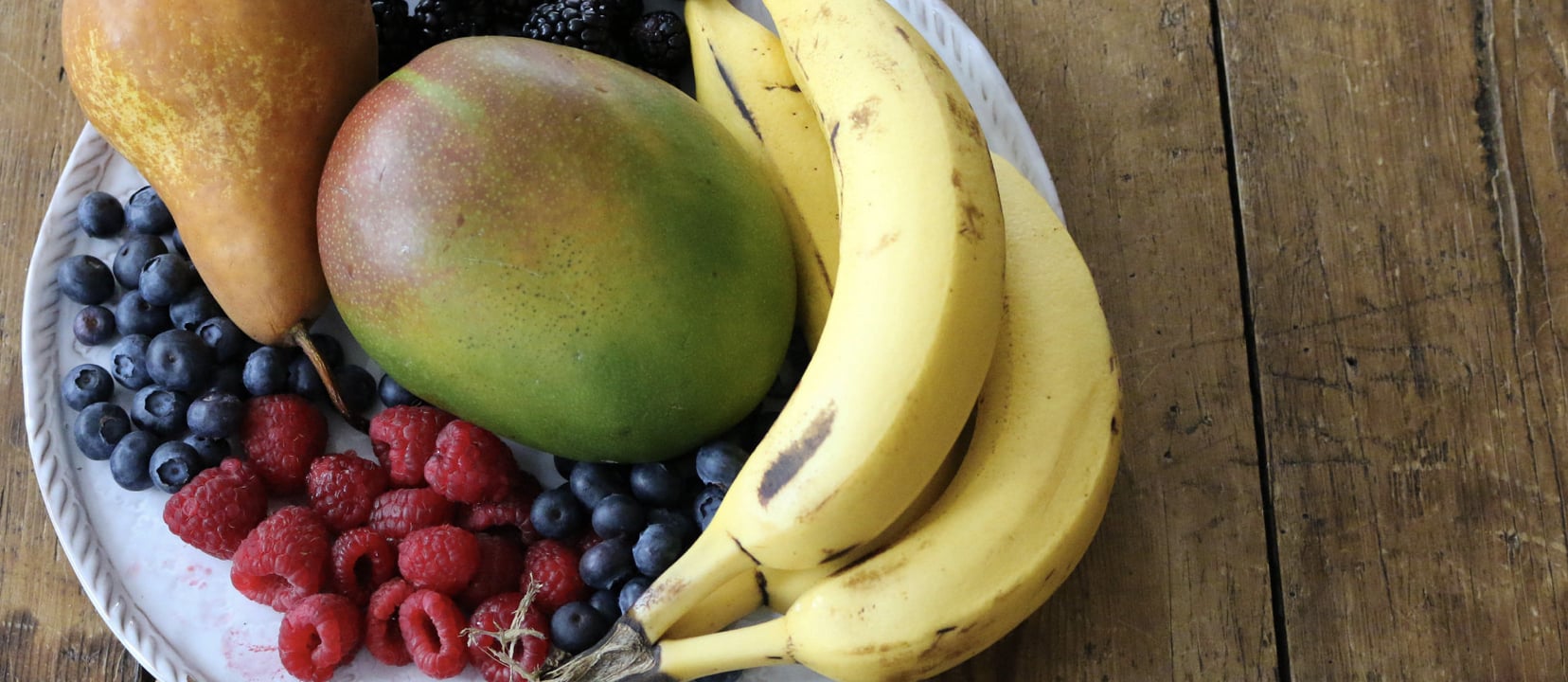In my video If Fructose Is Bad, What About Fruit?, I explored how adding berries to our meals can actually blunt the detrimental effects of high glycemic foods, but how many berries? The purpose of one study out of Finland was to determine the minimum level of blueberry consumption at which a consumer may realistically expect to receive antioxidant benefits after eating blueberries with a sugary breakfast cereal. If we eat a bowl of corn flakes with no berries, within two hours, so many free radicals are created that it puts us into oxidative debt. The antioxidant power of our bloodstream drops below where we started from before breakfast, as the antioxidants in our bodies get used up dealing with such a crappy breakfast. As you can see in How Much Fruit Is Too Much? video, a quarter cup of blueberries didn’t seem to help much, but a half cup of blueberries did.
What about fruit for diabetics? Most guidelines recommend eating a diet with a high intake of fiber-rich food, including fruit, because they’re so healthy—antioxidants, anti-inflammatory, improving artery function, and reducing cancer risk. However, some health professionals have concerns about the sugar content of fruit and therefore recommend restricting the fruit intake. So let’s put it to the test! In a study from Denmark, diabetics were randomized into two groups: one told to eat at least two pieces of fruit a day, and the other told at most, two fruits a day. The reduce fruit group indeed reduce their fruit consumption, but it had no effect on the control of their diabetes or weight, and so, the researchers concluded, the intake of fruit should not be restricted in patients with type 2 diabetes. An emerging literature has shown that low-dose fructose may actually benefit blood sugar control. Having a piece of fruit with each meal would be expected to lower, not raise the blood sugar response.
The threshold for toxicity of fructose may be around 50 grams. The problem is that’s the current average adult fructose consumption. So, the levels of half of all adults are likely above the threshold for fructose toxicity, and adolescents currently average 75. Is that limit for added sugars or for all fructose? If we don’t want more than 50 and there’s about ten in a piece of fruit, should we not eat more than five fruit a day? Quoting from the Harvard Health Letter, “the nutritional problems of fructose and sugar come when they are added to foods. Fruit, on the other hand, is beneficial in almost any amount.” What do they mean almost? Can we eat ten fruit a day? How about twenty fruit a day?
It’s actually been put to the test.
Seventeen people were made to eat 20 servings a day of fruit. Despite the extraordinarily high fructose content of this diet, presumably about 200 g/d—eight cans of soda worth, the investigators reported no adverse effects (and possible benefit actually) for body weight, blood pressure, and insulin and lipid levels after three to six months. More recently, Jenkins and colleagues put people on about a 20 servings of fruit a day diet for a few weeks and found no adverse effects on weight or blood pressure or triglycerides, and an astounding 38 point drop in LDL cholesterol.
There was one side effect, though. Given the 44 servings of vegetables they had on top of all that fruit, they recorded the largest bowel movements apparently ever documented in a dietary intervention.
Cutting down on sugary foods may be easier said than done (see Are Sugary Foods Addictive?) but it’s worth it. For more on the dangers of high levels of fructose in added sugars, see How Much Added Sugar Is Too Much?.
What’s that about being in oxidative debt? See my three part series on how to pull yourself out of the red:
- Minimum “Recommended Daily Allowance” of Antioxidants
- How to Reach the Antioxidant “RDA”
- Antioxidant Rich Foods with Every Meal
Ironically, fat may be more of a problem when it comes to diabetes than sugar, see:
- What Causes Insulin Resistance?
- The Spillover Effect Links Obesity to Diabetes
- Lipotoxicity: How Saturated Fat Raises Blood Sugar
- Diabetes is a Disease of Fat Toxicity
In health,
Michael Greger, M.D.
PS: If you haven’t yet, you can subscribe to my free videos here and watch my live, year-in-review presentations:
- 2012: Uprooting the Leading Causes of Death
- 2013: More Than an Apple a Day
- 2014: From Table to Able: Combating Disabling Diseases with Food
- 2015: Food as Medicine: Preventing and Treating the Most Dreaded Diseases with Diet
- 2016: How Not To Die: The Role of Diet in Preventing, Arresting, and Reversing Our Top 15 Killers
